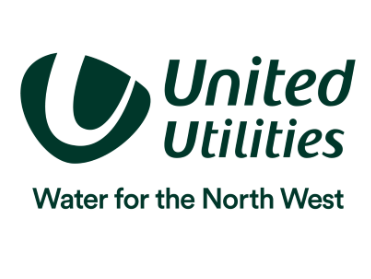A new research study has found that almost all of England’s 200 chalk streams are in a “dismal state of decline” as the result of what the Sunday Times newspaper described as "a lethal cocktail of pollutants", including poorly treated sewage.
The 2015 Riverfly Census, undertaken by Salmon & Trout Conservation UK (S&TC UK) has identified that there were only 14 pristine, unimpacted sites out of a total of 120 sites sampled in the survey on chalk streams and rivers across England.
According to the fisheries charity, the threat to rivers has moved from industrial pollution to a range of subtler but equally damaging impacts from sources such as agricultural and road run-off, poorly treated sewage, septic tanks and discharges from watercress and fish farms.
Dr Nick Everall from Aquascience Consultancy, the organisation which carried out the survey, commented:
“The national river survey showed a mixture of improving, stable and all too many sadly declining reaches in terms of overall ecological condition, environmental stresses and riverfly life in particular. Several rivers showed loss of condition with measures like mayfly species richness and freshwater shrimp population status over time.
“Breaking some of these river findings down with controlled laboratory tests has recently shown that raised levels of phosphate and sediment, akin to many of our stressed river conditions, has a detrimental impact upon the survival of early life stages of the base of the aquatic food chain for species such as the blue-winged olive.”
Paul Knight, Chief Executive of S&TC UK said that most of the rivers analysed were impacted to some extent, although the chalk rivers were the worst, with almost all of them in a dismal state of decline. England’s 200 or so chalk streams form about 85% of the world’s total stock of this richly diverse and complex habitat.
 Riverflies and other invertebrates are excellent indicators of the underlying ecological condition of the rivers because different species of invertebrates demonstrate different tolerances to the various forms of stress from pollution.
Riverflies and other invertebrates are excellent indicators of the underlying ecological condition of the rivers because different species of invertebrates demonstrate different tolerances to the various forms of stress from pollution.
Traditional and less exacting methods of analysing water quality frequently struggle to capture the often combined impacts of nutrients, sediment and subtle organic enrichment on invertebrate life in our rivers, according to S & TCUK.
The study was carried out by ecological consultants Aquascience Consultancy Ltd, on 120 sites in seven rain-fed rivers and five chalk streams across the country. For the first time, the investigation used ground-breaking research and chemical analysis to accurately identify the problem.
The Census identified that, although Hampshire’s River Avon - a chalk stream, came out best in the study, the next 6 places went to freestone rivers, mainly in the north and south west.
The report says the pristine river reaches hold the key to protecting and enhancing the poorer reaches of the rivers, commenting:
“For example, there are two reasons why the ecological condition and environmental stress markers for the middle-upper Avon are so much better than those for concomitant reaches of the River Test and the River Itchen: first, there is less anthropogenic pressure overall; and second, any pressures are better controlled through tightly regulated sewage works discharges, septic tank incursions, agricultural practices and ameliorated by in-stream rehabilitation or improvement work.”
Three of England’s most highly protected SAC chalk streams rank poorly in the Census
 Three of England’s most highly protected SAC chalk streams; the Itchen, the Lambourn and the Wensum, rank poorly in the Census. These contained low riverfly richness and abundance in many reaches of these rivers. On the Itchen, populations of the blue-winged olive have collapsed, despite being relatively abundant in the early 1990s.
Three of England’s most highly protected SAC chalk streams; the Itchen, the Lambourn and the Wensum, rank poorly in the Census. These contained low riverfly richness and abundance in many reaches of these rivers. On the Itchen, populations of the blue-winged olive have collapsed, despite being relatively abundant in the early 1990s.
In addition, the River Test, which is an SSSI - one of the highest conservation classifications- showed that flylife is below that expected of a pristine river with many significant species impoverished and rarer species absent.
Freshwater shrimp (Gammerus pulex) an important element in the food chain for trout and salmon, recorded very low numbers and measured against historic Environment Agency records, are showing a long and marked decline.
Environment Agency figures show that 83% of English rivers are failing to meet the standard of ‘Good Ecological Condition’ classification, measured by the European Water Framework Directive.
Paul Knight commented:
“So far The Water Framework Directive’s measure of water quality struggles to capture the often combined impacts that pollution is having on the invertebrate life in our rivers. The biometric fingerprinting we used in the Census was like examining these systems with a microscope rather than a magnifying glass and, significantly, the results showed that water quality is often insufficient to sustain the life that our target rivers historically supported.”
Evidence is irrefutable - human pressure is having a disastrous impact on rivers
Nick Measham, author of the report and S&TC UK environmental consultant, concluded:
“The aim of our Census was to provide, for the first time, an accurate picture of water quality in our rivers, to gauge the problems we are facing and to identify workable solutions to restore degraded watercourses to their pristine condition. The evidence from our Census is irrefutable. Increased human pressure is having a disastrous impact on our rivers. “
“We will now challenge the Government to tackle these damaging sources of pollution before we reach the point of no return. We have a five-point plan of action involving working with the Environment Agency, but also challenging them where necessary, especially over the urgent need to identify and regulate polluters. However, we believe the best chance of reversing the degradation in our rivers is to work directly with those who, mostly inadvertently, are the sources of the stress on river water quality, and to show them that they can also benefit from adopting measures that protect watercourses. ”
"We will challenge the Government and its agencies to tackle stressors on river systems"
The S&TC UK Report sets out the following five point action plan:
- We will use chemical sampling to zero in on the causes of water quality problems. This work is well advanced on the Upper Itchen, where we have already been influential in imposing new phosphate (P) limits on watercress farmers, but much more remains to be done elsewhere to stop the rot in so many of our rivers.
- We are researching how P and sediment is harming the early lifestages of aquatic invertebrates, using blue-winged olives as our research species, a once-common fly which is now in almost universal decline.
- We will work with the EA to seek ways to take full account of the impact of P and sediment, in particular in the official ecological classification of rivers.
- We will challenge the Government and its agencies to tackle the sources of these and other stressors on our river systems.
- We will repeat the Census of the 12 rivers in 2016 and 2017.
The SCTUK said:
“We believe this work is critical to understanding the true state of the water quality within our rivers and to gauge accurately the impact that poor water quality has on a river’s ecology. Only then can we identify the most cost effective measures to restore degraded watercourses to anything like pristine condition.”
Click here to read the full Report


 Attendees at next month’s National Civils Show, Floodex, National Drainage Show and Waterways Management on 26th and 27th November are set to benefit from an expert speaker line-up and the opportunity to visit a wide range of exhibitors all co-located in one place at Excel, London, one of the UK’s leading international exhibition and convention centres.
Attendees at next month’s National Civils Show, Floodex, National Drainage Show and Waterways Management on 26th and 27th November are set to benefit from an expert speaker line-up and the opportunity to visit a wide range of exhibitors all co-located in one place at Excel, London, one of the UK’s leading international exhibition and convention centres. Tackling leakage is one of the fastest and most cost-effective ways for utilities to bolster water security, writes Ben Crabtree, Product Line Director, Ovarro, revealing how the potential of smart technologies is being demonstrated around the world.
Tackling leakage is one of the fastest and most cost-effective ways for utilities to bolster water security, writes Ben Crabtree, Product Line Director, Ovarro, revealing how the potential of smart technologies is being demonstrated around the world. Balfour Beatty, the UK’s largest construction and infrastructure provider, has delivered exceptional environmental results on the Thames Estuary Asset Management 2100 (TEAM2100) framework, one of the nation’s most ambitious flood defence initiatives.
Balfour Beatty, the UK’s largest construction and infrastructure provider, has delivered exceptional environmental results on the Thames Estuary Asset Management 2100 (TEAM2100) framework, one of the nation’s most ambitious flood defence initiatives.

 Hear how United Utilities is accelerating its investment to reduce spills from storm overflows across the Northwest.
Hear how United Utilities is accelerating its investment to reduce spills from storm overflows across the Northwest. What is to be done about the UK’s failing utilities? Listen to Professor Dieter Helm explore the options to tackle the UK’s failing utilities – Thames Water, the Royal Mail and Network Rail in particular.
What is to be done about the UK’s failing utilities? Listen to Professor Dieter Helm explore the options to tackle the UK’s failing utilities – Thames Water, the Royal Mail and Network Rail in particular.